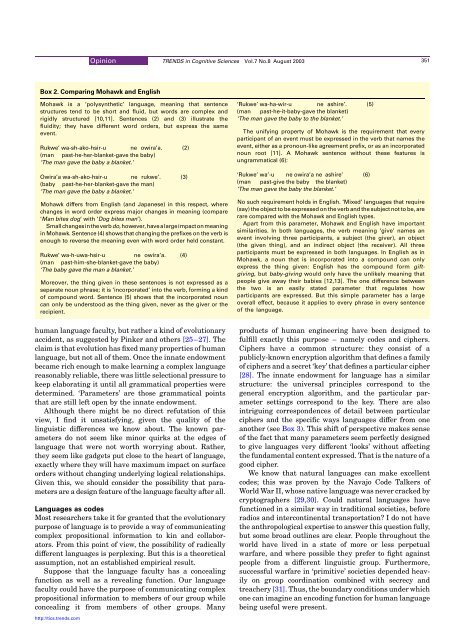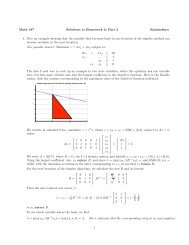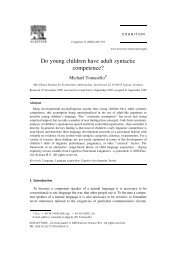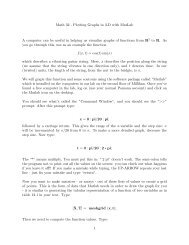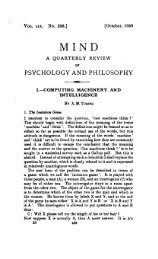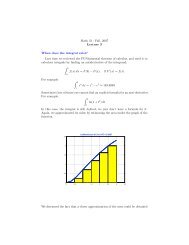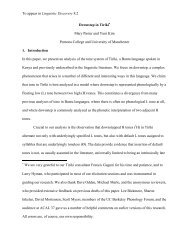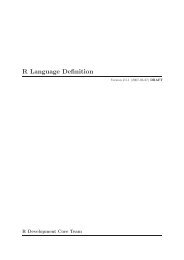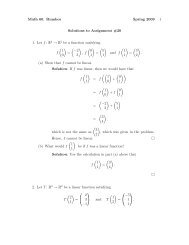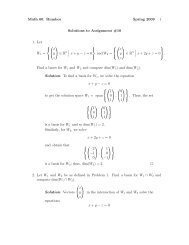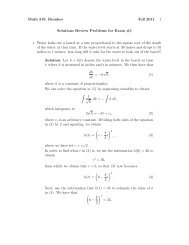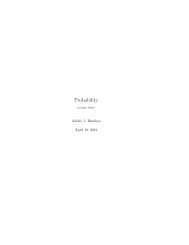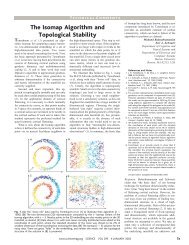Linguistic differences and language design
Linguistic differences and language design
Linguistic differences and language design
You also want an ePaper? Increase the reach of your titles
YUMPU automatically turns print PDFs into web optimized ePapers that Google loves.
Opinion TRENDS in Cognitive Sciences Vol.7 No.8 August 2003 351Box 2. Comparing Mohawk <strong>and</strong> EnglishMohawk is a ‘polysynthetic’ <strong>language</strong>, meaning that sentencestructures tend to be short <strong>and</strong> fluid, but words are complex <strong>and</strong>rigidly structured [10,11]. Sentences (2) <strong>and</strong> (3) illustrate thefluidity; they have different word orders, but express the sameevent.Rukwe’ wa-sh-ako-hsir-u ne owira’a. (2)(man past-he-her-blanket-gave the baby)‘The man gave the baby a blanket.’Owira’a wa-sh-ako-hsir-u ne rukwe’. (3)(baby past-he-her-blanket-gave the man)‘The man gave the baby a blanket.’Mohawk differs from English (<strong>and</strong> Japanese) in this respect, wherechanges in word order express major changes in meaning (compare‘Man bites dog’ with ‘Dog bites man’).Smallchangesintheverbdo,however,havealargeimpactonmeaningin Mohawk. Sentence (4) shows that changing the prefixes on the verb isenough to reverse the meaning even with word order held constant.Rukwe’ wa-h-uwa-hsir-u ne owira’a. (4)(man past-him-she-blanket-gave the baby)‘The baby gave the man a blanket.’Moreover, the thing given in these sentences is not expressed as aseparate noun phrase; it is ‘incorporated’ into the verb, forming a kindof compound word. Sentence (5) shows that the incorporated nouncan only be understood as the thing given, never as the giver or therecipient.‘Rukwe’ wa-ha-wir-u ne ashire’. (5)(man past-he-it-baby-gave the blanket)‘The man gave the baby to the blanket.’The unifying property of Mohawk is the requirement that everyparticipant of an event must be expressed in the verb that names theevent, either as a pronoun-like agreement prefix, or as an incorporatednoun root [11]. A Mohawk sentence without these features isungrammatical (6):‘Rukwe’ wa’-u ne owira’a ne ashire’ (6)(man past-give the baby the blanket)‘The man gave the baby the blanket.’No such requirement holds in English. ‘Mixed’ <strong>language</strong>s that require(say) the object to be expressed on the verb <strong>and</strong> the subject not to be, arerare compared with the Mohawk <strong>and</strong> English types.Apart from this parameter, Mohawk <strong>and</strong> English have importantsimilarities. In both <strong>language</strong>s, the verb meaning ‘give’ names anevent involving three participants, a subject (the giver), an object(the given thing), <strong>and</strong> an indirect object (the receiver). All threeparticipants must be expressed in both <strong>language</strong>s. In English as inMohawk, a noun that is incorporated into a compound can onlyexpress the thing given: English has the compound form giftgiving,butbaby-giving would only have the unlikely meaning thatpeople give away their babies [12,13]. The one difference betweenthe two is an easily stated parameter that regulates howparticipants are expressed. But this simple parameter has a largeoverall effect, because it applies to every phrase in every sentenceof the <strong>language</strong>.human <strong>language</strong> faculty, but rather a kind of evolutionaryaccident, as suggested by Pinker <strong>and</strong> others [25–27]. Theclaim is that evolution has fixed many properties of human<strong>language</strong>, but not all of them. Once the innate endowmentbecame rich enough to make learning a complex <strong>language</strong>reasonably reliable, there was little selectional pressure tokeep elaborating it until all grammatical properties weredetermined. ‘Parameters’ are those grammatical pointsthat are still left open by the innate endowment.Although there might be no direct refutation of thisview, I find it unsatisfying, given the quality of thelinguistic <strong>differences</strong> we know about. The known parametersdo not seem like minor quirks at the edges of<strong>language</strong> that were not worth worrying about. Rather,they seem like gadgets put close to the heart of <strong>language</strong>,exactly where they will have maximum impact on surfaceorders without changing underlying logical relationships.Given this, we should consider the possibility that parametersare a <strong>design</strong> feature of the <strong>language</strong> faculty after all.Languages as codesMost researchers take it for granted that the evolutionarypurpose of <strong>language</strong> is to provide a way of communicatingcomplex propositional information to kin <strong>and</strong> collaborators.From this point of view, the possibility of radicallydifferent <strong>language</strong>s is perplexing. But this is a theoreticalassumption, not an established empirical result.Suppose that the <strong>language</strong> faculty has a concealingfunction as well as a revealing function. Our <strong>language</strong>faculty could have the purpose of communicating complexpropositional information to members of our group whileconcealing it from members of other groups. Manyproducts of human engineering have been <strong>design</strong>ed tofulfill exactly this purpose – namely codes <strong>and</strong> ciphers.Ciphers have a common structure: they consist of apublicly-known encryption algorithm that defines a familyof ciphers <strong>and</strong> a secret ‘key’ that defines a particular cipher[28]. The innate endowment for <strong>language</strong> has a similarstructure: the universal principles correspond to thegeneral encryption algorithm, <strong>and</strong> the particular parametersettings correspond to the key. There are alsointriguing correspondences of detail between particularciphers <strong>and</strong> the specific ways <strong>language</strong>s differ from oneanother (see Box 3). This shift of perspective makes senseof the fact that many parameters seem perfectly <strong>design</strong>edto give <strong>language</strong>s very different ‘looks’ without affectingthe fundamental content expressed. That is the nature of agood cipher.We know that natural <strong>language</strong>s can make excellentcodes; this was proven by the Navajo Code Talkers ofWorld War II, whose native <strong>language</strong> was never cracked bycryptographers [29,30]. Could natural <strong>language</strong>s havefunctioned in a similar way in traditional societies, beforeradios <strong>and</strong> intercontinental transportation? I do not havethe anthropological expertise to answer this question fully,but some broad outlines are clear. People throughout theworld have lived in a state of more or less perpetualwarfare, <strong>and</strong> where possible they prefer to fight againstpeople from a different linguistic group. Furthermore,successful warfare in ‘primitive’ societies depended heavilyon group coordination combined with secrecy <strong>and</strong>treachery [31]. Thus, the boundary conditions under whichone can imagine an encoding function for human <strong>language</strong>being useful were present.http://tics.trends.com


